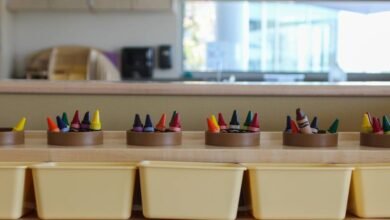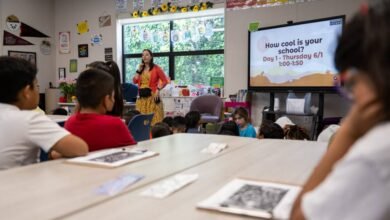Two groups of scholars revive the debate over inquiry vs. direct instruction

Soon after, another group of prominent education researchers issued a rebuttal. In March 2023, 13 scholars led by a Dutch researcher, Ton de Jong, took on the debate in the academic journal Educational Research Review. Titled “Let’s talk evidence – The case for combining inquiry-based and direct instruction,” their article acknowledged that the research is complicated and doesn’t unequivocally point to the superiority of inquiry-based learning. Some studies show inquiry is better. Some studies show direct instruction is better. Many show that students learn the same amount either way. (As they walked through a series of meta-analyses that summarized hundreds of studies, they pointedly noted that inquiry critics also ignored or mischaracterized some of the research.)
Their bottom line: “Inquiry-based instruction produces better overall results for acquiring conceptual knowledge than does direct instruction.”
How could two groups of scholars look at the same body of research and come to opposite conclusions?
The first thing to notice is that the two groups of scholars are arguing about two different things. The inquiry critics pointed out that inquiry wasn’t great at helping students learn content and skills. The inquiry defenders emphasize that inquiry is better at helping students develop conceptual understandings. Different teaching methods may be better for different learning goals.
The second takeaway is that even this group of 13 inquiry defenders argue that teachers should use both approaches, inquiry and direct instruction. That’s because students also need to learn content and procedural skills, which are best taught through direct instruction, and in part because it would be boring to learn only one way all the time.
Indeed, even the critics of inquiry instruction noted that inquiry lessons and exercises may be better at sparking a love of science. Students often say they enjoy science more or become more interested in the field after an inquiry lesson. Changing students’ attitudes about science is certainly not a compelling reason to teach this way all the time, as students need to learn content too, but even traditionalists admit there’s something to be gained from fun exploration.
My third observation is that the inquiry defenders listed a bunch of caveats about when inquiry learning has proven to be most effective. Unstructured inquiry lessons where students groped in the dark weren’t successful in building any kind of understanding.
- Caveat 1: Students need a strong foundation of knowledge and skills in order for inquiry learning to be successful. In other words, students need some facts and the ability to calculate things in different ways to take advantage of inquiry learning and arrive at deeper conceptual understandings. Complete mastery isn’t a prerequisite, but some familiarity is. The authors suggested, for example, that it can be beneficial to start with some direct instruction before launching into an inquiry lesson.
- Caveat 2: Inquiry learning is far more effective when students receive a lot of guidance and feedback from their teacher during an inquiry lesson. Sometimes the most appropriate guidance is a clear explanation, the authors said, which is the same as direct instruction. (My brain started to hurt, thinking about how direct instruction could be woven into inquiry-based learning. Is it really inquiry learning if you’re also telling students what they need to do or know? At some point, shouldn’t we be labeling it direct instruction with hands-on activities?)
The 13 authors admitted that each student needs different amounts and types of guidance during an inquiry lesson. Low-achieving students appear to benefit more from guidance than middle- or high-achieving students. But low-achieving students also need more of it. And that can be tough, if not impossible for a single teacher to manage. I began to wonder if effective inquiry teaching is humanly possible.
Not only can inquiry include a lot of direct instruction, but sometimes direct instruction can resemble an inquiry classroom. While many people may imagine that direct instruction means that students are passively absorbing information through lectures or books, the inquiry defenders explained that students can and should be engaged in activities even when a teacher is practicing direct instruction. Students still solve problems, practice new things independently, build projects and conduct experiments. The core difference can be a subtle one and hinge upon whether the teacher explains the theory to the students first or shows examples before students try it themselves (direct), or if the teacher asks students to figure out the theories and the procedures themselves, but gives them explicit guidance along the way (inquiry).
Like all long-standing academic debates, this one is far from resolved. Some educators prefer inquiry; some prefer direct instruction. Depending upon your biases, you’re likely to see a complicated, mixed body of research as glass half full or glass half empty.
In December 2023, Sweller and the inquiry critics wrote a response to the rebuttal in the same Educational Research Review journal. Beyond the academic sniping and nitpicking, the two sides seem to have found some common ground.
“Our view… is that explicit instruction is essential for novices” but that as students gain knowledge, there should be “an increasing emphasis on independent problem-solving practice,” Sweller and his camp wrote. “To the extent that De Jong et al. (2023) agree that explicit instruction can be important, we appear to have reached some level of agreement.”
The real test will be watching to see whether that consensus makes it to the classroom.





